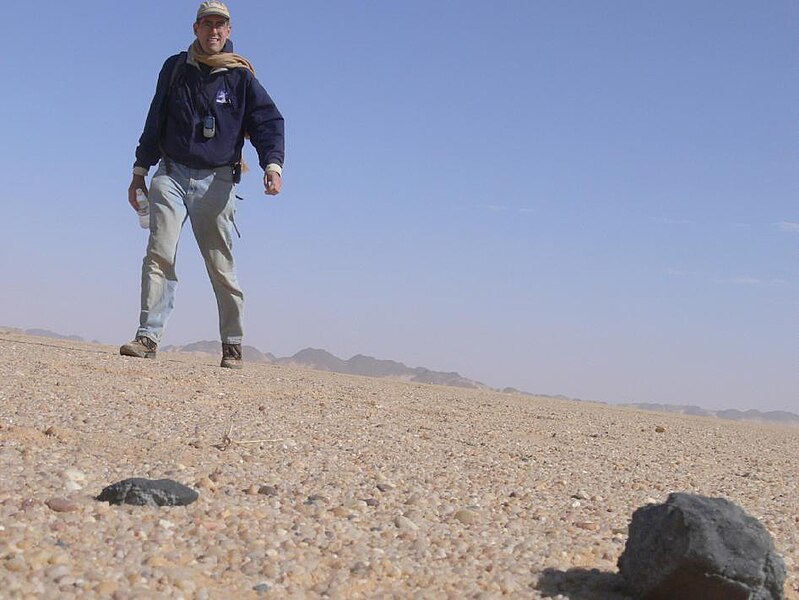This is an event that occurs a couple times a year, and brings in a special guest speaker. Last night's was Dr. Timothy Spahr, director of the Minor Planet Center. His talk was called "Searching for Near-Earth Asteroids", and he had some awesome special effects thanks to it being held in the planetarium.
I learned a ton, but perhaps the first fact from last night I should mention is this:
THIS IS NOT GOING TO HAPPEN AGAIN. Yes, a big asteroid killed a lot of critters 65 million years ago, plummeting the planet into chaos and darkness, but Dr. Spahr reassured everyone last night that scientists already have tracked all the asteroids of this size. They aren't going to hit us. None of them. We've found them all. They're easy to find, because they're big.
So yay! No planet-wide catastrophe via giant asteroid!
On the other hand, we do have other asteroids to worry about. One of my favorite special effects from the talk was watching our solar system "fill up" with newly discovered asteroids through a timelapse animation. From 1980-1990, we found 10,000 asteroids by taking pictures of the sky and just looking. The nineties brought along digital techniques. Between 1990-2000, we found 100,000 asteroids. By 2010, 500,000.
There are still millions left to find.
They're smaller, sure. And the vast majority have no chance of crossing Earth's path. The ones left to find are mostly 50 meters across and tinier, but still, a 50 meter wide asteroid can punch a mile wide hole in the ground. Case in point:
That's Meteor Crater in Arizona. It is a mile wide, made by a 50m iron meteorite. What if that impact had happened somewhere today, somewhere populated?
 Eep.
Eep.Luckily, the asteroid was only 3 meters wide and landed in the Nubian Desert. It broke up before it landed, and scientists were actually able to find pieces of it! And with that sort of "practice" run now under their belts, they've got a much better grasp on how to locate objects heading our way.
For anything bigger than the 2008 asteroid, there are plenty of methods being developed to deflect the space rocks from colliding with Earth. We can attach rockets to push the asteroid away, send up a giant spaceship to act as a gravity pull to tug it away from us, or even hit it with stuff. NASA's already hit space stuff with stuff before:
That's an actual picture of NASA crashing a chunk of copper into a comet in 2005. On purpose. Just to see if we could. Awesome. (Well, I'm sure there was a more science-y reason, too).
So really, the moral of all this is we don't have to worry. Yes, we should fund these projects so we can be safe, but as long as we actually allow these people to do their work, we aren't going to be in danger of getting hit by an asteroid. Go Minor Planet Center!
Minor Planet Center on Twitter: @MinorPlanetCtr
Facebook: https://www.facebook.com/MinorPlanetCenter



It's good to know that there are no massive asteroids in our immediate path. [Or us in theirs?]
ReplyDeleteIt's inevitable that we'll come in contact with one eventually. Things in the great, black yonder shift and evolve all the time. One rogue comet slipping in could mess us all up. We may have to wait millions of years for it.
I'm okay with that.